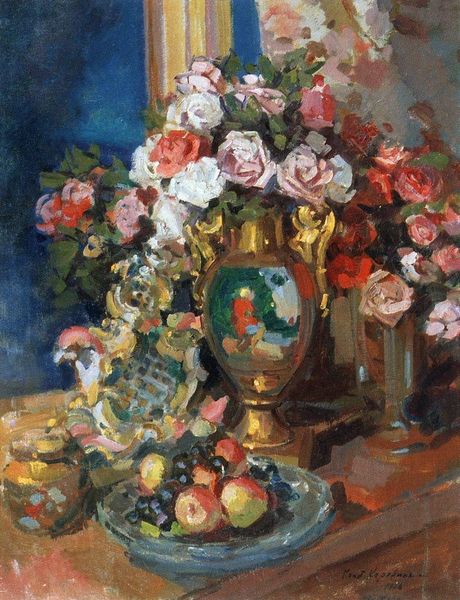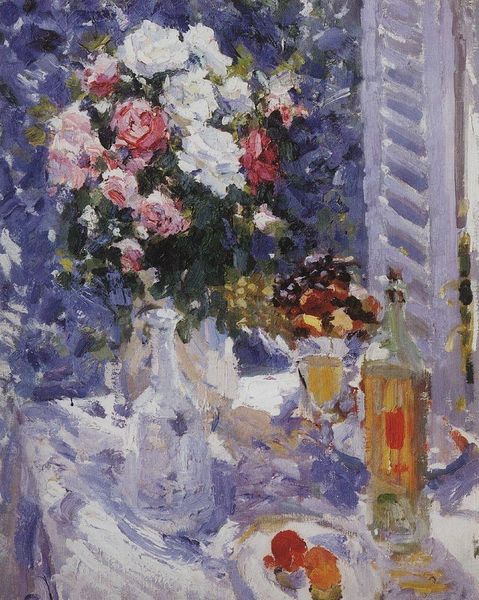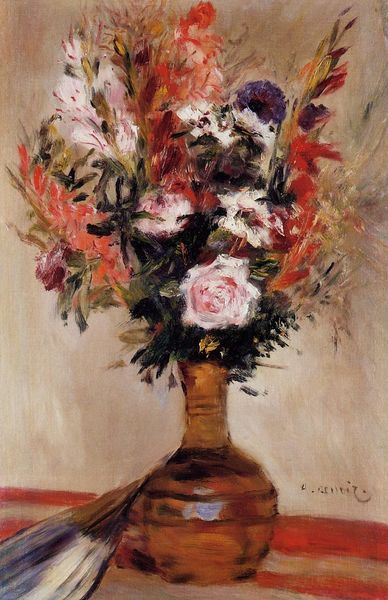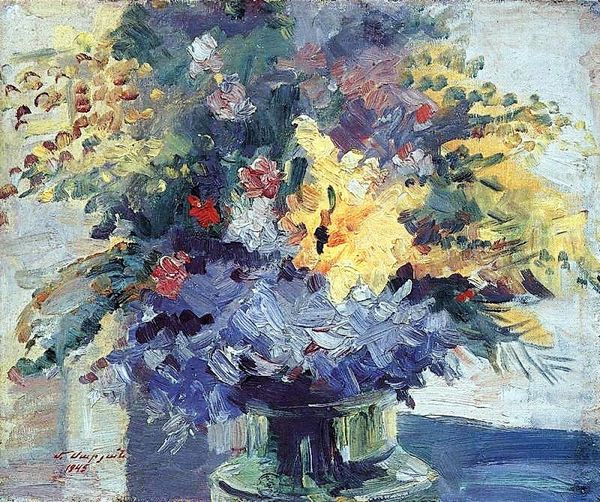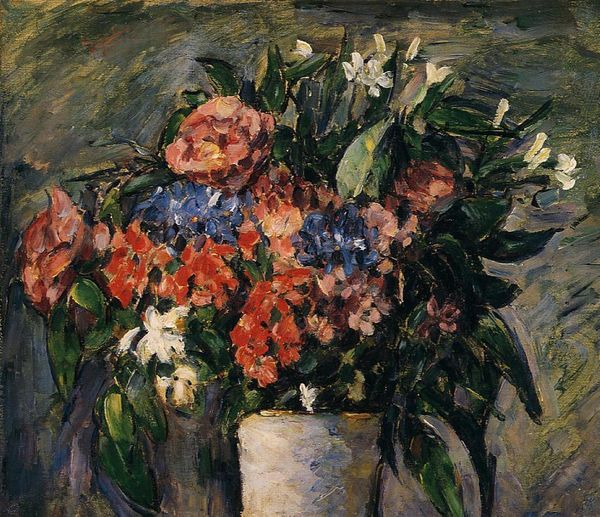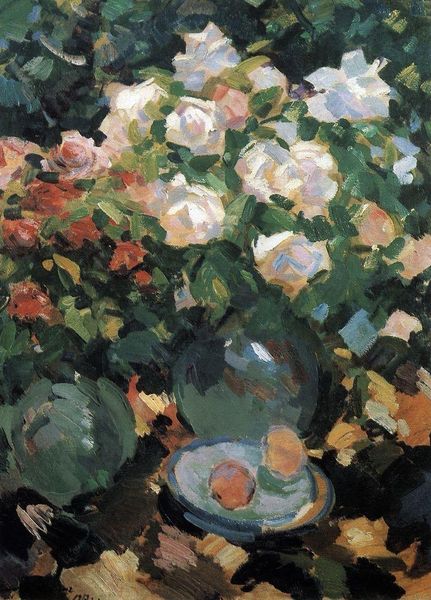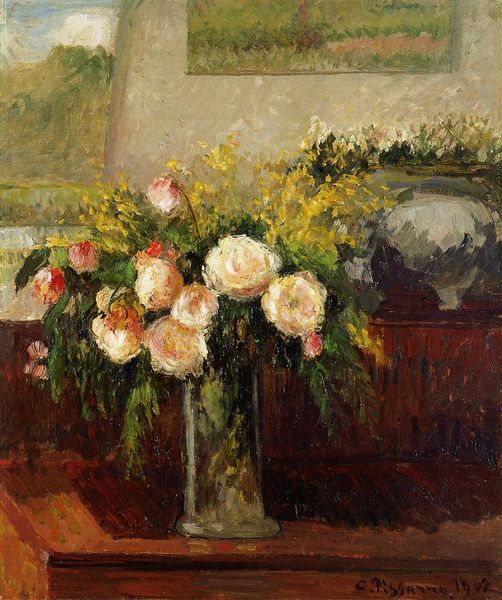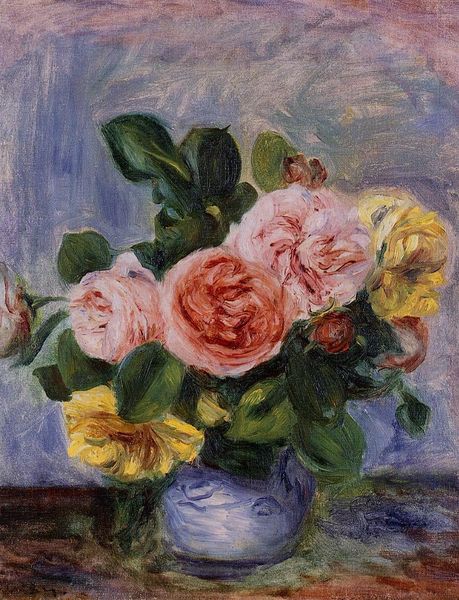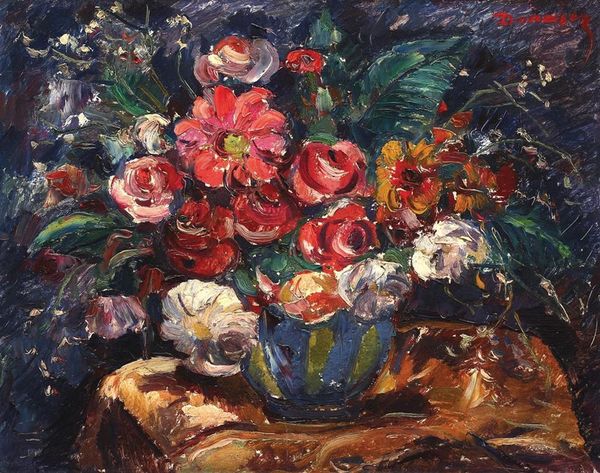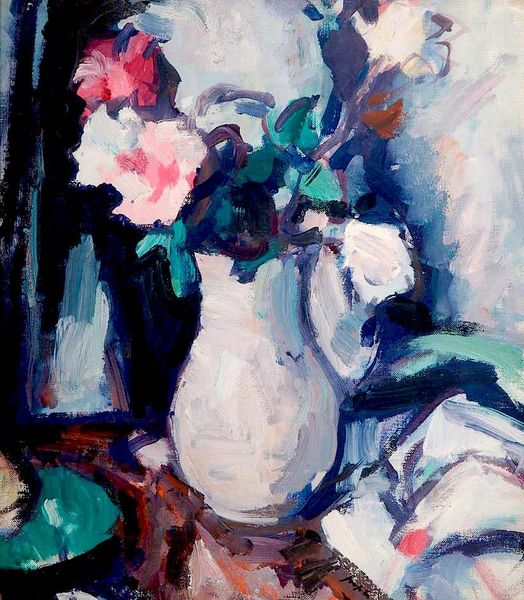
Still life with portrait of Pertseva 1916
0:00
0:00
Copyright: Public domain
Editor: This is Konstantin Korovin's "Still life with portrait of Pertseva," painted in 1916. The vibrant colors and loose brushstrokes create such a dreamy, almost melancholic mood. How do you interpret this work, especially the combination of the still life and the portrait? Curator: I see it as a poignant commentary on the constructed nature of identity and the role of women in early 20th-century Russia. Consider the layers: we have the overt objectification of the portrait alongside the supposedly "innocent" arrangement of flowers. Do you think the painting subtly questions societal expectations of women to be beautiful objects, cultivated and admired like a still life? Editor: That's fascinating! I hadn't considered that angle. The portrait almost blends into the background. Is that intentional, do you think, to diminish her individuality? Curator: Perhaps. Or it could be Korovin hinting at the ways women were often unseen or unheard in the patriarchal structures of his time, literally part of the domestic scenery. He makes Pertseva's presence ghostly, less pronounced than the floral display, and certainly less solid than the exterior winter scene visible through the window. Editor: It’s interesting how the interior world of women contrasts with the exterior, male-dominated world. What does this say about the painting itself? Curator: Indeed. Perhaps he suggests that by confining women, society diminishes both them and itself. The painting, viewed through that lens, is more of a protest, subtly resisting rigid gender norms. Editor: This really changes how I see the painting! Thank you. Curator: My pleasure! It's in the intersections of art, history, and social critique that the real meaning resides.
Comments
No comments
Be the first to comment and join the conversation on the ultimate creative platform.
